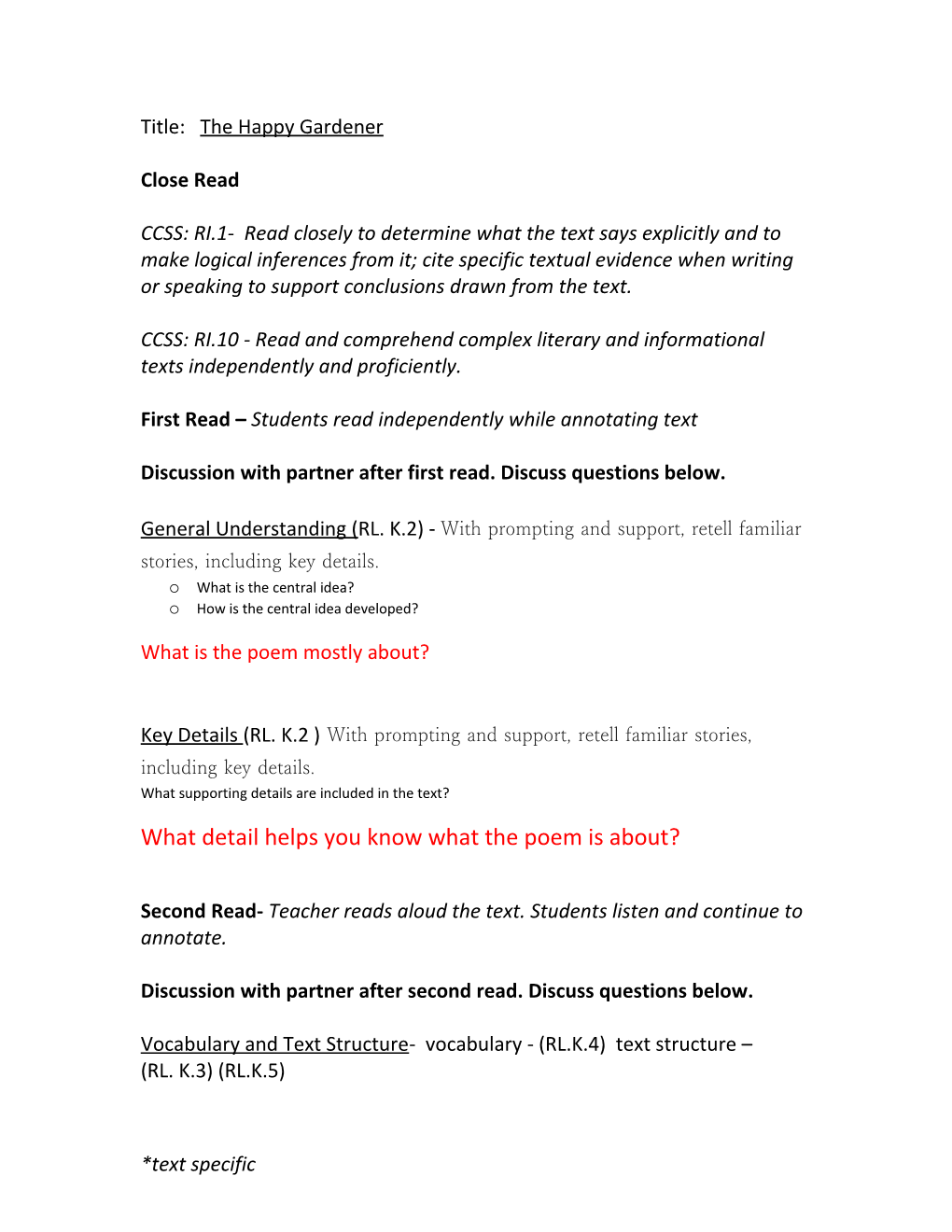Title: The Happy Gardener
Close Read
CCSS: RI.1- Read closely to determine what the text says explicitly and to make logical inferences from it; cite specific textual evidence when writing or speaking to support conclusions drawn from the text.
CCSS: RI.10 - Read and comprehend complex literary and informational texts independently and proficiently.
First Read – Students read independently while annotating text
Discussion with partner after first read. Discuss questions below.
General Understanding (RL. K.2) - With prompting and support, retell familiar stories, including key details.
- What is the central idea?
- How is the central idea developed?
What is the poem mostly about?
Key Details(RL. K.2 )With prompting and support, retell familiar stories, including key details.
What supporting details are included in the text?
What detail helps you know what the poem is about?
Second Read-Teacher reads aloud the text. Students listen and continue to annotate.
Discussion with partner after second read. Discuss questions below.
Vocabulary and Text Structure- vocabulary - (RL.K.4) text structure –
(RL.K.3) (RL.K.5)
- How does the text structure help the reader understand the vocabulary?
- How does specific word choices shape meaning or tone?
(RL.K.4) Ask and answer questions about unknown words in a text
Does the text help you understand the word “row”?
(RL.K.7)*With prompting and support, describe the relationship between illustrations and the story in which they appear (e.g., what moment in a story an illustration depicts).
- What topic or idea is presented?
- How is this topic similar or different when presented in various mediums?
- Which medium is most effective
- What limitations are realized when using ____ medium to present the topic?
How does the illustration match the text in the poem?
Purpose- (RL.K.6) - With prompting and support, name the author and illustrator of a story and define the role of each in telling the story
- What is the point of view/purpose in this text?, How do you know?
- What conflicting viewpoints does the text explore?
- How does the author treat the conflicting evidence?
- Is the author effective in his examination of conflicting evidence? (does the author present both sides equally or is the author showing a bias point of view?)
Where does it say who the author and illustrators are?
What is the job of each person?
Inferences – integrated -
In what season do you think this poem takes place?
Third Read- Teacher reads, partner read or independent read (choice)
Opinions, Arguments & Intertextual Connections- (RL.K.9) - With prompting and support, compare and contrast the adventures and experiences of characters in familiar stories
- What argument/content is presented?
- What claims/facts support the argument/content?
- In what manner is the argument/content & claims/facts presented?
- What evidence is presented?
- Is the evidence relevant to the argument/content? Why or why not?
- Is enough evidence presented to support the argument/claim?
*text specific
